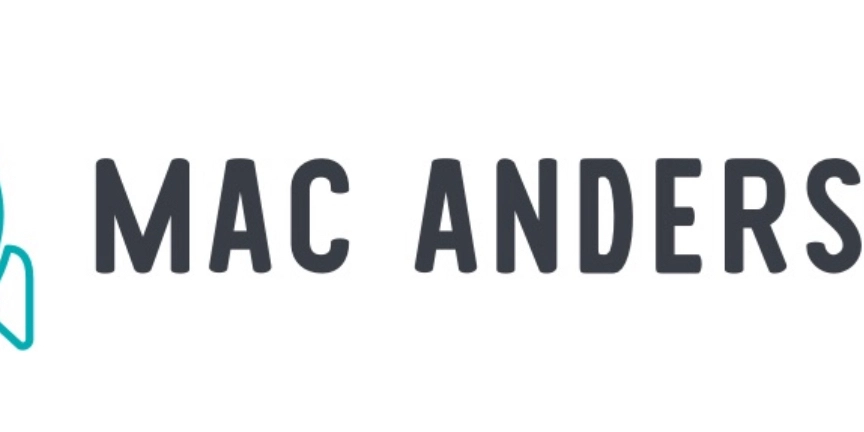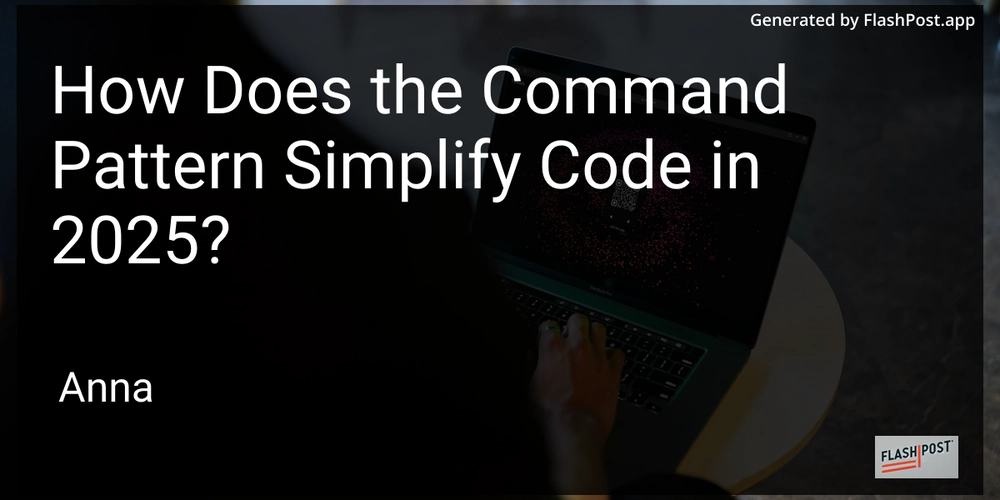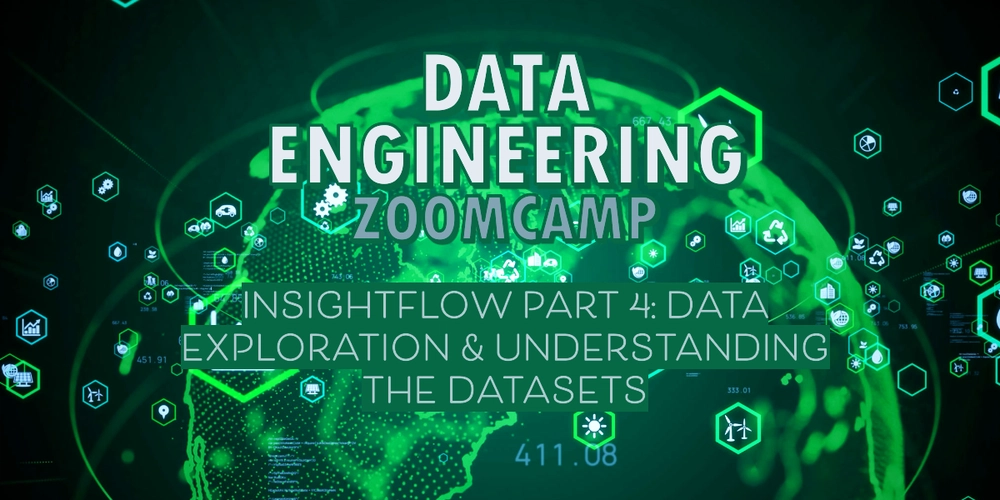[Podcast] Smarter Brand Growth: How to Align Marketing & Sales (with ABM/ABX) with Jennifer Mancusi
Learn Account-Based Experience (ABX) strategy that unites marketing, sales, and customer success to drive focused, sustainable brand growth.
![[Podcast] Smarter Brand Growth: How to Align Marketing & Sales (with ABM/ABX) with Jennifer Mancusi](https://justcreative.com/wp-content/uploads/2025/04/jennifer-mancusi-26.png)
We unpack Account-Based Experience (ABX) which is a strategic approach that unites marketing, sales, and customer success to drive focused, sustainable brand growth.
Our guest, Jennifer Mancusi, walks us through their 7 Steps to ABX Success, offering a clear, practical framework to move from scattered tactics to shared results.
Together, we explore:
• Why ABX is more than a rebrand of ABM—and why it matters
• How to align company strategy with marketing strategy
• The power of a well-defined Ideal Customer Profile (ICP)
• How to build a target account list that fuels real opportunities
• Ways to create content that resonates (and converts)
• How to run omnichannel campaigns that feel intentional, not intrusive
• What metrics matter when it’s time to measure and scale
If you’re tired of misaligned teams, generic marketing, or chasing leads that go nowhere, this episode will shift your thinking and sharpen your strategy.
Listen Here
- Listen on Apple Podcasts
- Listen on Spotify
- Watch on YouTube
- Listen below
Love the show? Please review us on Apple.
Play Now
Watch on YouTube
Learn Brand Strategy
Brand Master Secrets helps you become a brand strategist and earn specialist fees. And in my opinion, this is the most comprehensive brand strategy course on the market.
The course gave me all the techniques and processes and more importantly… all the systems and tools I needed to build brand strategies for my clients.
This is the consolidated “fast-track” version to becoming a brand strategist.
I wholeheartedly endorse this course for any designer who wants to become a brand strategist and earn specialist fees.
Check out the 15-minute video about the course, which lays out exactly what you get in the Brand Master Secrets.
Transcript
Hello, and welcome to JUST Branding. The only podcast dedicated to helping designers and entrepreneurs grow brands. Here are your hosts, Jacob Cass and Matt Davies.
Well, hello folks, and welcome to another episode of JUST Branding. Today, we are excited to welcome Jen Mancusi to our podcast. We are thrilled to have Jen. She’s got over 15 years of B2B marketing experience within the Insight sector, and she’s super passionate about helping businesses grow through data-driven growth. She’s also the co-founder and CEO of Grow Getter, a growth marketing firm that specializes in the data, insights and analytics sector. On top of that, she’s a member of the Forbes Communications Council and the Chief Network, where she says she shares her expertise and insights with other leaders and professionals. And she’s on our show today to do the same for all of you lovely people. Jen, welcome to the show.
Thank you guys so much for having me. I’m excited to be here.
So we want to tuck into one of your kind of hot topics at the moment, which is account-based marketing, or as you call it, account-based everything. So we’ll get to that in just a minute to explain what that is and why we should all know about it. But before we do that, tell us a little bit about you, what you do and how you got to be on our show today.
Sure. Yeah. I mean, you’ve said it. I’ve been a marketer for a very long time and have always been really focused on data-driven marketing strategies that really connect the dots between your marketing strategy and actual revenue and business growth rather than just doing marketing for the sake of marketing. So we launched GrowGetter almost two years ago to help companies do that better and really connect those dots, as I mentioned, and also just educate the market on what marketing that performs actually can look like versus just social media, things that look really nice or a beautiful website, which all that stuff is really great if you can measure it and track it. And so that’s where we’re focused on.
Nice, nice. So is it very sort of short-term based, like lead gen stuff that you tend to focus on?
No, actually, we focus on a long-term strategy. So me and the team will sit in with clients as fractional CMO or as an extension of the team. So we really are building outsource marketing teams to help to create a foundation of marketing that performs long-term. So whether that’s focused on brand building, SEO, demand gen and demand capture or growth of existing clients, we’re really kind of working to embed a data-driven performance marketing structure into businesses where maybe it’s an earlier stage startup and they don’t have marketing resources in-house or a company that’s been around for 50 years and needs a little shakeup internally, that we come in and we’ll reframe the structure of the marketing strategy and try to make sure that we’re setting people up for long-term success. Versus short-term, how can we get some revenue in real quick?
Good to know. Here’s the killer question for you, Jen, just before we get into what we’re supposed to be talking about. But what kind of proportion of revenue split do you usually recommend for businesses for their long-term growth? How much should they be investing in the longer-term brand building aspects of their marketing spend, as opposed to their lead generation? Because this is a question we get loads of.
So I actually have, I bristle a little bit at the mention of lead generation, right? I think that’s kind of an older strategy of like, how do we get as much, as many contacts into our CRM as possible so we can sell to them? I think that the market is really responding to a demand generation strategy instead of lead gen. And the difference for me is that brand is a part of that. You know, if you do a good job at building brand, that is future demand capture, right? That is future revenue. So I think of it as more of a holistic end to end, what’s your top of funnel, middle funnel, bottom of funnel strategy? And how do they all work together to drive revenue as opposed to what percent do you invest in brand? What percent do you invest in lead gen? You know, if you do a really good job at brand, then your lead gen or demand capture should be more efficient, less expensive and perform better. And maybe actually if you do a really good job at organic and brand, you have to spend a lot less money on demand. So I think of it as more of a holistic strategy than a percentage. But I could give you numbers if you really pressured me to.
I have a question. Hi, Jen. Lead gen and demand capture, I’d love to just hear the differences between them just for our audience. So we’re clear on the differences.
Yeah. So I think demand capture is kind of the new lead gen, and demand generation is all encompassing of brand building, thought leadership, expertise, awareness at the top of funnel. The demand capture piece is what we would formally call lead gen. It’s people downloading, expressing intent, I guess. At what point is marketing handing over an interested party into a sales or business development team or into a customer team? So that’s where I think of demand capture, is that you’re there at the right moment when the customer or potential customer is showing intent to purchase your services. They might not even be ready, but they’re showing some interest or they’ve taken an action that’s more than just browsing and researching. And then from there, the sort of how do we grow and create evangelists and people that want to talk about you and how great you are and spread the word, that word of mouthpiece. So I think the demand capture is the new definition that we used to call lead gen, but the overarching funnel is the demand gen funnel. And I think that’s the strategy that people should be thinking about if they aren’t today, it’s like how does you know brand awareness and lead generation should no longer be separate, in my opinion.
Nice, nice. Love that. So you fuse all of that together as a coherent strategy to get people who are interested and show action, you know, take some action to kind of show that, express that interest right the way through to the end. And you help your clients kind of get there through that. That sounds awesome. I’m glad we just kind of tucked into that because, you know, there’s so many different aspects of this. And trust me, I’m getting old, so I’m using old phrases. So thanks for bringing me up to speed. I love it. So let’s go in, let’s actually tuck into that. What we’re supposed to be talking about throughout this episode, which is account-based marketing. So again, I guess it’s helpful if we start with some definitions. So let’s start with that. How would you sort of express a definition for account-based marketing? And then we can go into account-based everything.
It might even fuse altogether, because I think the definition of account-based marketing has changed so much over the years and now has sort of become account-based everything, but maybe people are still kind of a little bit confused about what the potential could be. So I think account-based marketing is really like highly targeted, personalized efforts to capture the demand of specific accounts. That’s what it should be. One-to-one marketing plus, we’ll talk about the everything, efforts to create awareness, capture demand for very specific accounts. I think when it first sort of was a thing, account-based marketing was synonymous with technology that supported account-based marketing. So I was doing account-based marketing. We weren’t calling it that, but we had an Excel sheet of our top target accounts and how many contacts we had in those accounts every month, right? We would keep track of the growth. And that was our sort of version of account-based marketing. Eventually, tools like Demandbase and Triblio, and these sort of targeted ad-serving platforms came out. And the market was saying that is account-based marketing, right? This targeted ad-serving is account-based marketing. But I think today, it’s a much more holistic strategy and should be a lot more of a holistic strategy. And that’s why I talk about account-based everything, that actually it should be more than just marketing, right? It needs to have involvement from other departments or the company as a whole in order to really be successful. So we could talk a little bit more about what I mean by that and kind of the steps to success there. But I think that’s how account-based strategy has evolved over the years from account-based marketing, maybe from targeted account marketing to account-based marketing to now account-based everything.
All right. So there’s quite a bit to tuck into there. But you call it ABX, don’t you? Account-based everything, right? So I guess if I was to ask you in one short sentence to sort of define that, how would you give us a kind of a concise definition?
Yeah. I mean, I think account-based everything is really about adopting an account-based strategy at the company level. And that’s kind of the, I’ll try not to tease too much into the seven steps for success, but that’s kind of the first step is adopting an account-based everything strategy at the highest level. I am a firm believer that if account-based marketing is implemented by marketing alone, it will fail. It will fail if it sits with marketing alone. So it can’t be just account-based marketing anymore. And that doesn’t mean it’s not owned by marketing, or that someone who is specializing in account-based marketing doesn’t sit within the marketing team, but it has to come down from the top at the company level and be a cross-functional effort and have cross-functional shared success metrics in order to really work.
I’ll tell you what, let’s get into these seven steps, because I think that will help as well flesh out some of this a little bit more for us. So I know you’ve got these seven steps for ABX success, so perhaps we could walk through them. You mentioned the first one is kind of almost like that mindset, that sort of strategic approach from the top down, but anything else? What do you do in that sort of first step? If a business or a brand was to adopt this, what would you be expecting them to be doing, step one?
Yeah, so I think the first step for that, setting that account-based strategy at the company level is to understand the roles in the different departments and to set shared objectives amongst them. So if you think about the marketing department, maybe that’s the easiest, you know, those traditional ABM tactics to drive awareness and engagement from target accounts, right? That’s going to be your traditional or maybe not so, maybe they’re very current and modern marketing strategies, but geared towards specific target accounts. And then what’s the role of sales in your sales team in that account based effort, you know, even things as simple as, are you working off the same target account list? I have seen account based strategies where marketing is targeting one target account list and sales is targeting a different target account list. That’s not a joined up and cross-functional strategy. It’s not going to work. So, making sure that you’re aligned around who you’re targeting. Same with your customer success teams or your account teams, anybody who’s managing existing customers. This is a great strategy for expansion and growth of your existing customers, especially if you’re working with large global enterprise clients. You might be in a very small corner of PepsiCo or McDonald’s, and there’s a ton of opportunity for you to expand. Working really closely, marketing, sales, business development, and your customer team to find opportunities and work on strategies that can help you expand those clients, that might be the direction that you’re going. But again, coming from the top of the business and looking at what are our company goals, we want to bring in new logos or we want to expand our existing customer base or whatever those goals might be, agreeing to an account-based strategy to achieve those goals will only help everybody do better, because then you can set shared metrics and objectives. I think that’s one of the challenges with when account-based marketing sits with marketing alone, it’s difficult to kind of establish any ROI or say, if you’ve got different people within the org that are working towards that goal of growing an account, for example, it’s hard to say, oh, let’s calculate the ROI on this specific marketing tactic. We spent this much on advertising and this is how much revenue, because there’s a lot of different efforts going into that work. So if you’re going at it cross-functionally and collaboratively and have shared objectives around that strategy, then everybody wins, right? Because you’re all working towards the same goals.
Right. So it seems to me there’s a couple of sort of tracks as well from what you’ve said, because there is, of course, as you mentioned, like maybe a company that already is within sort of selling to a massive company, a global entity, for example, enterprise level, but they’re only capturing a small amount of what they possibly could. So there’s like that kind of widening the account kind of strategy. And then there’s the kind of we need new logos sort of track, which is kind of like completely like, you know, what have we got? What information have we got? Where are we going? How are we going to attract those new logos in? And they almost seem to me like two slightly different approaches. Would you agree with that? Or do you see them as sort of a very similar approach?
I think when it comes to being part of an account based strategy, it’s similar in that it’s that one to one highly personalized. But the type of content that you deliver and the things that you say to someone who’s not a customer versus someone who is, is very different. And that’s where, you know, kind of that content creation and prep and research about the clients that you’re going after is so critical. So you make sure that you’re putting the right messaging and content in front of them at the right time. This is customer journey conversation, right? You’re not going to say the same thing to an existing customer that you would to somebody who’s not heard of you before. So being conscious of that. And that’s where I think it differentiates itself between, you know, a new logo effort versus a growth and expansion effort.
Yeah, but I do like the idea of having that, you know, as a strategic pillar for growth, right? I think it’s super smart because, as you say, if the leadership is shining a spotlight on it, if there is a strategy, if it’s documented and shared goals, and maybe a cross-functional team who are working on it, how powerful, you know, can that be? And also, as you say, like, I’ve worked with organizations and they’re selling it to big companies and they don’t even realize that, you know, they’ve already got an account with them. So, you know, the conflict there can be heavy. You can get into really embarrassing situations, can’t you? It’s like, well, you know, what do you mean? You need to set us up through procurement. Aren’t you already supplying us, you know? And those kind of conversations. So you need to have your ducks in a row, I would suggest, to kind of make sure that that’s really, you know, that’s really something that you want to do. Okay, great. So let’s imagine we’ve got a company, they’ve set it up, they’re saying, right, the leadership team are on board, this is one of their strategic pillars for the year ahead. They’ve got some objectives and some key results, or however they track their efforts, and they’ve got a cross-functional team focused on these things. I think step two we may have crossed into, which I understand is like setting those objectives. So maybe let’s talk a little bit about that. How do you get those objectives sort of set, and what’s your advice to businesses to begin to do that?
Yeah, it’s super important that this is happening again. I might say this a lot in this episode. Cross-functional collaboration is key at each of these steps, right? So in setting the objectives, you know, you can’t have one person or one department set the objectives of another, right? This has to be collaborative. And I think that there are key metrics that matter at each stage. So there should be some awareness and engagement and intent metrics, especially for if you’re looking at a new logo strategy and using account-based everything to drive those new logos, you know, building awareness amongst those target accounts, generating some interest and measuring the intent is going to be really critical. So, you know, making sure you carve out one or two metrics that are going to be those kind of top of funnel. I think one challenge that can happen, and maybe this is more of a tactical challenge for marketers, is we put bottom-of-funnel content in front of top-of-funnel audiences, and then we say it doesn’t work. So, I think like setting those top-of-funnel, those high-level brand awareness metrics is really important when you’re trying to build awareness amongst a target group of customers. It’s okay to spend a little bit of money and not get somebody to agree to meet with you on the first touch. That’s totally okay, but you want to make sure you then have a plan to drive them through. So, another objective or set of objectives might be around generating opportunities and generating pipeline. So, not just do we have more people looking from the right place, but are they actually engaging? Are we creating new opportunities for the team? And is sales creating opportunities for themselves? We’re building pipeline for the team from those target accounts. So, those are really key metrics. So, one thing I think about a lot when, again, this is maybe more broad than just account-based, but ensuring that you are not just tracking vanity metrics, right? Like lead cost, for example, for me, is a vanity metric. Like, I can get you a lot of really inexpensive leads, but they might not be good quality. So, lead cost on its own is not a good metric, but opportunity cost is a great one, right? Are you getting the right people in? Are they actually driving the behavior that you need to generate more revenue down the line? So, that’s another area that’s a great metric to have in place. And then the North Star is revenue, right? All of this should be driving revenue. The reason why it’s not the only thing we measure is that sometimes that takes a while, right? Some companies, especially if you’re a big kind of enterprise sale type business, a software business, that’s got a big price tag, you might have an 18-month sale cycle. And that’s too long to see if what you’re doing is working. So that revenue number needs to be the North Star, needs to be the thing that everybody’s working towards, but it’s important to have those other leading indicators prior to make sure you’re at least on the right track.
Okay, cool. So that’s step two. So step one, we’ve got the strategies. Step two, we’ve got our objectives. What’s step three?
So step three is actually defining the ideal customer profile. And we talked about this a little bit like, you know, having marketing with one list of target accounts and, you know, sales with another list of target accounts. And we’re not even defining the accounts yet, but it’s really important before you get into creating your list to actually define what that ideal profile looks like. So I think it’s important to be as narrow as you can when you’re creating your ideal customer profile, not just company demographics, right? I think that that is a good start, but there’s often a lot of sort of culture and mindset elements that need to be taken into account. If you’re sort of a DIY software platform, you want to make sure that you’re targeting people within organizations that are interested in using software in a DIY fashion. There are people that don’t want to do that, and they want other people to do the work for them, and that’s okay. So understanding that about your ideal customer, understanding the growth potential of those customers, especially if you’re thinking about either land and expand strategy or expansion on existing customers. Sometimes somebody could fit into all your firmographic and culture and mindset profile elements, but not actually have much growth potential. So it’s important to look at that as well. I also think intent data can be a factor in creating your ideal customer profile. You might be looking at specific industries or areas where you want to sell more into, but actually there’s some indicators from the market that a particular industry is really kind of doing a lot of research on the type of service or software that you are offering. Or maybe you’re winning a lot of business or getting a lot of organic inbound from an industry you’d never really thought of before. So anyways, all those things combined, I think is really important to defining that ideal customer profile to go beyond just a company of this size with this many people and this much revenue and here’s your titles, right? That’s not enough to be able to understand then how you’re gonna actually help those companies and those people and be able to reach them really effectively. So I think one way to do it actually is to look at your best customers and put them in a bucket, right? To look at all of the qualities of your best customers and say, these are the ones, if I could clone these a million times, these are, this is exactly what that would look like. And it’s not to say that you wouldn’t sell to companies that are outside of your ideal customer, but you won’t target them in this effort, right? So being as narrow as you can in this step is really important.
A lot of this, this insight sounds like it’s coming from data points, but I’m just curious on where you’re getting this information from and how someone else could actually get that sort of information.
You mean like the intent data or other?
Like figuring out who your best customer is or the intent data or whatever it may be.
Yeah. So for intent data, there’s a lot of tools out there like Bombora or Sixth Sense or G2 has some intent data that it can offer. A lot of times your own CRM will have something, some functionality that will show you maybe what anonymous traffic is doing on your site and sort of what that looks like, what companies are visiting your site and are interested in the type of thing that you’re doing. Another one, Spark Toro, which is a Rand Fishkin platform. And it’s really an audience research platform, but you can go in and kind of put in different titles or different keywords and see what people are talking about on the internet, what podcasts they’re listening to, what different content they’re engaged with. And those are great ways to kind of surface what people might be looking for and what types of people might be looking for, what you’re doing. I think in terms of looking at your best customers, that’s where that cross-functional collaboration with your customer team is so important. Maybe you have an NPS program and you can see your NPS scores coming in. Look at all your promoters, right? Look at all your nines and tens, and then take those companies out and just profile them, mark down what their firmographics look like, who was the buyer, do some interviews with those people and figure out, why did they buy you to begin with and what problem do you solve for them? That customer research is a really important step. Another thing to do, I would say, is talk to your internal teams that are actually servicing these clients, and maybe you’re not measuring it automatically yet. Some companies are going to be measuring time spent on different clients. So maybe there’s something to that. If you want more clients that your team has to spend less time with, that they’re a little bit more self-reliant, that could be a factor. It maybe depends on the business, but talking to your teams about who they would want more of is a good place to start, and then looking at some of the data in your CRM would be another place.
All right, just a couple of things on there. That customer research piece you speak of, I just think is so important for folks to really hone in on because the amount of executives I speak to, and they sort of sit in an ivory tower, they do not get out there and speak to the customers, or they don’t commission discussion with customers and reports back to them before they make decisions, is insane. Because to me, the business exists to create customers, to create the right type of customers, like you’ve said. And if you’ve got really happy customers who are super thrilled and giving you an internet promoter scores of nine and ten, why wouldn’t you speak to them? Why wouldn’t you try and understand what is the value that we are generating here for these people, so that exactly what you were saying, Jen, you can clone them. So get out there and speak to people. That’s my advice from that one. The other question, well, the question I had was, who decides this ideal kind of customer profile, Jen? Because you’ve talked a lot about data analysis, you’ve also talked about talking to the customer team. Like how do you kind of usually see it working? Because I’ve got some thoughts, but I’d love to get your thoughts on who decides this kind of this, for this pillar of account-based marketing, right? Who is the ideal, who’s on the list, who decides that?
Yeah. So I think this is again why that cross-functional collaboration is so important, because everybody has to agree. Whether the CEO decides or marketing decides or sales decides or customer decides, at the end of the day, everybody has to be on the same page about it and say, yes, we are going forward with this ideal customer profile. I have seen cases where marketing defines the ideal customer profile, and sales says, thanks for sharing, right? I’m going to go do my own thing. So it’s not going to work if everybody doesn’t agree. So some of that might depend on company culture. If you have a really collaborative culture to begin with, that might be an easy thing. If not, and it takes some coaxing to get on the same page, it might be an executive level decision. It might be a CEO level decision to define that ideal customer profile. Hopefully, it’s not something you have to bother the CEO with. It’s something that the CEO approves. But again, I think it probably just depends on the culture of the business that you’re in. What are your thoughts on it? You said you have thoughts.
Well, similar to yours, so I’m glad we’re pretty much in alignment. But I think the thing for me is that if you’ve got a big strategic decision where you need everybody on board, right, there’s a couple of things that come to mind. I always feel that you get more buy-in when you involve people in at least some sort of workshop or some sort of process by which their voice can be heard, right? So even if at the end of it, their suggestion, their kind of view is not the one that’s taken by the business, they feel that they’ve had an opportunity to input in. The second thing is that obviously they need to understand why their suggestion perhaps isn’t the one that’s been selected or has been selected, right? Because that’s important. So that kind of internal comms piece, that process to get to a strategy that everyone can buy into is key. And as you say, like whether that’s a consensus thing, you know, I work with a lot of businesses in Europe, right? And some of the Europeans, particularly in the Nordics, they love a good, they chat about everything for ages and they come to a consensus. I find more US companies, I mean, I’m really generalizing now, but US companies, they’re more happy to kind of like, you know, take a gut, gut, let’s go for this and then they worry about it and they adapt and tweak as they go through. So it depends, as you say, on the culture and how people are used to making decisions, but usually those two principles of allowing people to be heard and making sure they all understand why a decision has been taken at the end of it, usually a kind of universal, in my view. Any thoughts, Jacob, to add to that? Jen, I’d happily get your thoughts. Jacob isn’t disagreeing with me, folks. This is one for the record books. Good stuff.
No, I totally agree. I think it’s important to involve people because they feel like exactly what you said, that they’ve been heard, they’ve participated and they’ve seen the process that got you from A to B. And so, even if it wasn’t what they originally went in thinking, they understand how you got to the end. And that’s important.
Let’s just, like, put a little tweak on this. Let’s say they don’t agree. How would you manage that?
Oh, good question.
Fire them all.
Fire them all. No, I mean, maybe, actually, maybe, maybe if people can’t get on board with a company strategy, then they’re not a good fit for the company. I don’t know. I guess I’ve never had a situation where maybe people don’t start out in agreement, but they usually get there by the end if you involve them throughout the process. I guess maybe one tactic I would take is, and again, I think it depends on the culture, and some of this might depend on company size as well, but I believe in a culture of experimentation and let the data show what works and what doesn’t. If at the end of a workshop or a strategy session, you still have a couple of camps like, hey, we think we should go this direction, we think we should go that direction, well, maybe there’s an experiment that you can play with and say, let’s let the data tell us what direction we should go, and maybe you can, for lack of a better term, AB test it. I wouldn’t call it that because this is probably bigger than that, but let’s try it. Let’s see what works. I’m not one to claim I know what’s going to work for really anything I do. Let’s put it out in the market. Let’s try it. If we agree at what success looks like, we should know really quickly what we want to keep going with and what we want to turn off. And typically, data will be the decision maker if there’s opinions that still differ.
All right. So we’ve set the strategy. We’ve got the objectives. We defined the customer profile. We’ve created the target account list. Next step.
Well, I don’t think we’ve quite built the list yet. So this is…
Let’s talk about the list.
What do we think about that?
Yeah, its own step. So we’ve defined the profile, but building the list is actually quite hard. It’s maybe easy if you’re focused on expansion because you’ll probably have a pretty tight list of customers that fit with that profile where there’s growth potential and you want to really focus the team on expanding them. When you’re looking at new logos, it could be a little bit harder to define. It’s easy to pull a list of a thousand companies you want to go after. It’s really hard to create a list of 25, for example. That’s where I recommend you get started. No more than 25 companies when you’re first embarking on an account-based strategy. I think this is where a lot of companies go wrong. Because we want to, as salespeople and revenue leaders and marketers, we want things that can scale, scale exponentially. But a true account-based strategy doesn’t scale very well. You can do industry-based marketing efforts that are like, your content is tailored towards a specific industry, but a true account-based strategy with really hyper-personalized content. I know there’s a lot of AI out there that thinks it can do it. I think it will eventually. It can’t yet. You’ve got to start small. Otherwise, it’s too resource-heavy to create relevant content for too many companies. My recommendation is to build that target account list to start with less than 25 accounts. Prioritize your ideal customers, of course, align with your sales and customer teams, and make sure that everybody’s on the same page about who those 25 accounts are. Some companies, again, depending on your size and your resources, and what you want to put behind this effort, you might start with one account and just sort of see what the process is to build that relevant content and then launch it and see what the results are. Now, if you’re starting that small, I wouldn’t can the strategy if it doesn’t work right away. That’s not enough data, but I have seen companies start there with just one at a time and then slowly build once they have some proof points and some examples of what works and what doesn’t.
You have some phrases there that you say like drive new logos. I have not heard that. Does that just mean like you’re choosing the accounts and that’s what you mean by logos?
Yeah, exactly. Like if you just have the, oh, we’ve always wanted to work with this company. They’re a perfect fit by our ideal customer profile. We’ve never gotten them to engage with us. That’s that new logo that we want to be on that target account list.
Okay, so it’s just the company name more or less. Yeah, exactly.
You know, on that account list, sorry, Jen, another question. You know, at the start of this, we were talking about the two tracks, like maybe like new accounts, new logos and existing. Would you jumble them all together? In other words, like, hey, or would you really focus on new ones or existing ones, like to start with, like for people?
Yeah, I think to your point earlier, you said this, like are the strategies different? Like they are a little different. So even though maybe some of the tactics would be similar, I would keep those on separate lists. You’re going to have different success metrics, right? The success of growth of existing is very different from the success of building awareness amongst a new list of accounts. It doesn’t mean you can’t do them both at the same time if you have the resource to implement that, but I would definitely keep those lists separate and focus on them a little bit differently.
Here’s a tough question. If you had limited resources, which ones would you pick? Would you pick growing existing or targeting new?
That depends on the ideal customer. Let’s assume that you’re working with global enterprise brands. I would focus on an expansion strategy. I think the customer acquisition cost, the revenue acquisition cost is significantly lower when you’re growing existing companies as opposed to winning new business. Typically, the sales cycle is shorter as well. Again, especially if you’re working with those big enterprise clients, you talked about it earlier, we’re already an approved vendor. We’re already through your procurement process, which typically takes 12 to 18 months. Even just letting people know that, hey, we’re an approved vendor. We work with your neighbor on the other cubicle over there. Maybe you didn’t know that. That’s going to be a shorter path to revenue than building awareness and winning new business. If you’re very limited on resources and you’re working with that profile of company, then I would definitely focus there. Now, if your customer profile doesn’t have multiple buying centers, you’re really centralized, you’re in that client and that’s all you can be in that client. There’s not another division that could buy your software or your services, then I would not focus there because it will be less impactful and you’ll use a lot of resources on customers that don’t have the growth potential to expand. That goes back to defining the profile of who you’re going to be going after, is whether or not there’s, are there 25 buying centers or is there one? If you’re already in the one, then probably wouldn’t be the focus.
Another tactic you can use if you’re doing that expansion strategy is you can obviously use your current contacts to then expand across their buying centers. So, you’ve got an in, hopefully the door’s open. If you’re doing a good job and the value is being created, then it shouldn’t be too hard for you to say, hey, do you know what? Is there anyone else in your business we should be talking to? Because we love working with you and I’m pretty sure that we could probably offer some services to X department or X division. Do you know anyone in that division that we should be talking to? So, you almost get your contact, your relationship in that business to start doing some initial awareness for you, before you even get there, so super smart. Okay, so we’ve got our list. Let’s get into the next step.
Yeah, so now this is probably the hardest part and it’s about creating personalized, hyper-personalized relevant content for that account. And so, even as you were just describing like, oh, maybe you can use your contact to give you referrals. That could be something that you do, but maybe they want to work on the content with you or are willing to participate with you in creating that content. Maybe you want to make a case study of the work that you’ve done together, or maybe they provide a testimonial. So oftentimes, especially in these big, huge enterprise companies, your main client might not actually know the other buyers in the other buying centers. They might know some of them, but not all of them. So would they be willing to be quoted? Would they be willing to work on a case study with you and just provide a little bit of social proof? That’s great content to put in an account-based campaign that you might build. Another thing that I, this is my first step for building any account-based content, whether it’s for new business or for expansion, is research. You have to research the company that you want to get into and understand what their priorities are. So this could be reading their latest earnings reports, sitting in on their shareholder meetings. Like, if you can go to someone and say, hey, I just heard your CMO talking about this being a priority for the year. How are you doing that? We can help you do that. Speak to them. This is why you have a list so small of 25 accounts, because you have to put the resource and effort into creating content that actually speaks to them. So saying, hey, I care about you. I care enough about your business that I’ve done this research. I saw you just launched this new product. There’s a new flavor of yogurt. How’d that launch go? How can I help you to do this better? That type of content really, really connects with people. And in a world where it’s difficult to cut through clutter from a marketing perspective, this is the best thing you can do, is reach people with something that they go, oh my gosh, yes, that’s exactly what I’m thinking about right now. How did they know that? And it could be because you have a contact there that you’re talking to, you’ve done the work to sit on that shareholder meeting or read that earnings report, or just Google the business and see what’s in the news about them, good or bad. I mean, I’ve had experiences where I found some bad press. Maybe there was a bad ad that got some backlash and you go, hey, this seems like a little bit of a PR crisis. I can help you with this. And when you reach people at the right moment with something that’s really top of mind for them, they’re a lot more likely to engage versus think of all the other things that are in their inbox or on their LinkedIn feed or just in the universe. It’s, let me tell you about this cool feature I have and how great my tech is. Well, they’re glossing right over that. So if you can interrupt that flow with something they really care about, like that’s the gold mine right there.
I’m so on board with that, Jen, because we get so many emails about coming on the podcast. And the first line is always, I love your recent episode X. It really like X. It was just like a copy paste, like AI. They try to personalize it, but you can see through the BS. And when you get something that’s actually personalized, like a video message that talks to your product or your problems, like it cuts through.
And I’m going to get up 50 videos of folks, Jacob, like, hey, Jacob, back out my video. I love that.
But you know what? I think even that can be done wrong. And then you put in a ton of effort and time into something that doesn’t actually work. Like I’ve gotten videos where people say the thing that you just described in the email. Hey, I saw that post that you did about marketing. I really enjoyed it. All my posts are about marketing. Like be more specific. Let’s have a conversation. I want to hear that stuff from people and I want to connect. And other people want that, too. But you have to, like you said, you’ve got to put in a little bit of effort to actually make a connection versus. And this is why I think that AI personalization stuff isn’t quite there, because that’s what you’re getting. Saw your episode about X. I thought it was Y.
Cool.
So did everybody else. Right. So tell me you actually listened and you actually resonated with something and you actually can help me with a problem that I’ve articulated and I’m in.
Exactly. Exactly. Cool. All right. So we’ve now got some personalized content. What’s next?
So now you have to get it in front of people. So you could create content and it can just sit. But this is where you’re back to that cross-functional collaboration and thinking about the different ways that you’re going to drive people to a single location. So what I like to do is build a landing page that’s dedicated for a single account. And the content that’s on that landing page, it could be a video, it could be a case study, it could be quotes, it could be other logos of similar companies, some stuff about your service or your tech that is relevant to the problem that you’ve articulated, but some kind of all-encompassing landing spot page that we’re driving people to from an omni-channel distribution perspective. So those different channels could be classic marketing, email, nurture, LinkedIn, in-mail from your sales team, cold calls from your business development team. Maybe this is where a demand-based or a tribileo comes into play. If you want to do targeted ad serving, you can get some of the way there on LinkedIn with paid ads, retargeting, website personalization. Even if you’ve got the tech for that. Even something like HubSpot will allow you to create a list of people. Only that list of people gets a particular pop-up when they hit your website. Drive people to that personalized content from all these different methods. Sometimes you’re going to have all the people that you want in your CRM already. Maybe it’s a heavier email strategy. Maybe you want to invite people to workshops or conferences or lunch and learns. This is a great strategy if you’ve got a contact that’s willing to promote you internally. Maybe they want to set up a lunch and learn session and invite their colleagues to join you and hear you talk. That’s a great way to do that. So, think of all of the marketing tactics that are your favorites and throw them all together, marketing and sales and customer success tactics and drive people to that one location. You should have a call to action there that allows them to learn more or to meet with somebody when they’re ready. But also like a transitional call to action that just gets them into your customer journey. So if they’re getting there and discovering you for the first time, you give them just enough information that gets them excited. Allow them to do a little bit more research or maybe download something or express some intent. And also give them the opportunity to get in touch and actually book a meeting or something, whatever your process is, your sales processes to get them further down the funnel. But I think the key for me is once you’ve created that really hyper-personalized content, you put it in one spot and everybody in the organization who’s involved in getting people there is getting people there in different ways. Nice.
Are you doing this on an individual level, like per logo or brand? Or are you doing this on like a bulk or does it change depending on the size?
I would recommend doing it on an account level because if you’ve got some like incredible, I’ll give you an example. One of the companies that I worked for in the past where I was CRO, we were a video survey platform. And so we captured a bunch of videos from consumers about their opinions on a particular product. It was a product we knew was important to this business because we listened to their shareholder call and this was a big focus for them. And then we said, hey, we’ve got some videos from consumers talking about this product. Come take a look and see what you think. The video snippet was maybe 90 seconds or two minutes. And we said, we actually have 30 minutes of this content to share with you. It can’t by its nature be broadly applicable to multiple businesses. To do it right, to actually get people excited about talking to you, it’s got to be hyper-personalized. And then we had, you know, our business development team, you know, cold emailing and cold calling. With that message, we had marketing serving ads through LinkedIn to people that fit the ideal profile. And we had our, you know, our client team talking to our contacts about, you know, hey, would this be something you’d be willing to send to anybody on your side? And, you know, or are you interested in it? And through that, you know, there’s exponential growth potential by getting people interested in something that they’re really interested in. So even better, if you have some, a product or service that you can actually demonstrate what they’re gonna get within the marketing content, oh, that’s even better. Not everybody has that, right? It depends on what you’re offering is. So if you’ve got that, leverage that as well. Give them a little taste of what they’re gonna get by working with you so that they, you know, they wanna learn more.
All right. And at what point are you measuring, tracking, tweaking throughout this process?
Yeah, I think that has to happen all the time. There’s certain metrics that are, you can track really short term. If you’re running ads, right? I would, I would measure and optimize your, your ads just the same way as you would any ad paid ad strategy. So pretty regular look at engagement metrics and testing different creative and, and that sort of thing. So that’s, that could be a daily or weekly effort, maybe a lead generation or number of MQLs. That needs to be more weekly opportunities, maybe monthly revenue, monthly and quarterly. So kind of depends on the metric, but I think everything should be looked at, you know, kind of all the time to make sure it’s working. And the other thing is like watching for the content to decay because it will, right? If you’re reaching a sort of short or a small group of people after a month or six weeks or so, the engagement metrics are going to start to go down. So you want to be able to identify that, hey, this was working for a bit. It’s kind of starting not to work a little bit. So what’s the next phase of that communication? If you have that ready to go beforehand, great. And you can kind of build a sequence of content that goes on for a little while, or maybe it’s more timely and it’s more based on immediate research and kind of saying, oh, let’s see, is this company talking about anything new? Or maybe one of their leadership did a session at South by Southwest and they talked about something that you want to incorporate, right? There’s so many things you can be monitoring to keep the content fresh. But if you’re checking those performance metrics, the engagement metrics pretty much daily, then you’ll know that moment where, hey, we need to kind of change it up a little bit. But I wouldn’t recommend just turning it off and saying, okay, we’re done with that client, right? If that’s your number one top target account, they’re still your number one top target account. So thinking creatively about how you can keep it fresh and keep the content exciting and interesting and engaging until you hit that revenue goal. Maybe that client has a $500,000 revenue goal. So you work until you get there.
At what point would you stop or when do you know to move on to the next account?
I think if you’re not getting really any engagement from your… If you’re not even getting people to the content, then there’s probably something wrong. Maybe it’s the target list, maybe it’s the channel. I think this is where tools like Spark Toro that I mentioned earlier are really helpful because the profile of your target or your prospect, they might not exist on LinkedIn. Maybe they’re spending a lot of time on Reddit and you’ve never done an AMA on Reddit. So I think watching that, like if you’re not getting any engagement, you’re in the wrong place, most likely. Figuring out how to get in front of the right people in the right place. I think you might turn it off if you are working with your sales or customer team and they’re like, hey, we’re getting people on the phone, we’re getting people excited and interested, but it’s the wrong people or they don’t have the authority to buy. We thought they would. So maybe there’s a problem with your ideal customer profile at that point. Yeah, I think those are the reasons that you would turn it off, but I wouldn’t say it’s much different from really any other marketing strategy. If you have done a good job at the beginning of saying, this is what success looks like, if you’re not being successful, it’s time to either optimize or cut it. Maybe if you’ve got several of these campaigns running at once, that could be another reason to turn it off. If you see a lot of traction with one and you want to invest more resource and more money in the success of that one that’s really flying, then maybe you want to cut some of the bottom 10 percent or whatever is not working quite as well, just to free up resources to do more with something that could be another reason to turn something off.
Love that. So, I think that that’s got us through the seven steps, right?
So, that was six. The distribution strategy is six and measure and scale is seven. So, yes, that’s, I guess, what we were just talking about on the measurement, is tracking the metrics that matter along the way, making sure you’re optimized for conversion and eventually…
The scaling part we haven’t necessarily talked into, let’s say it’s working really well and you landed a few logos, like how do you just, do you keep just adding to it or like what do you, what’s the process?
Yeah, I would just keep adding accounts to your target list until you’ve been maximized, I guess.
Yep.
The thing I wouldn’t do to scale is say, okay, now we’re going to do something, we’re gonna do like industry-based content. You’re diluting the account-based strategy immediately. That’s not to say that industry-based content doesn’t work. Super effective. It’s not account-based marketing. It’s not account-based strategy.
It’s a different pillar of a strategy.
Totally. So if you’ve got an account-based strategy that’s working and you want to scale it, keep it account-based. That’s my recommendation. And I say this because I did this wrong. I was running account-based strategies with specific accounts and said, we are resource-constrained. We can’t do any more of this hyper-personalized content. Let’s try to do industry-based. That kind of fell flat a little bit. Worked okay, but not great. Not the way the account-based strategy was working. So I thought, okay, well, what if we actually selected the specific accounts within those industries? So say we had an alcoholic beverage campaign that we wanted to run. We chose the top, I think it was 75 global alcohol brands to target within that. It was still not personalized enough to have the same effect as the account-based strategy. So we went back to a true account-based strategy. So again, I think that industry-specific content could be very effective. I think it’s better than really broad content if you’re starting from a space where everybody’s getting everything. Then maybe you do want to try industry-based content, but that level of personalization doesn’t get to the specific goals and challenges of those accounts that you really care about the most. Again, I wouldn’t recommend this if your target accounts are maybe really small companies or ones that don’t have a lot of growth potential, but you’re working with these big enterprise global businesses, it’s winning one could help you meet your goals for the year. If you’re a salesperson, maximizing that one account could help you hit your quota for the year. Focusing all of or a good portion of your energy and resources on that one is actually more effective than just trying to spray and pray to everybody. And I think the market that we’re in right now, people expect more personalized content and more personalized experiences because there’s a lot of fluff and there’s a lot of a lot of people saying the same thing, right? So if you can say something really unique and really personalized, I think it has a much better effect. So that’s my rant on scaling. I think scaling means adding more accounts, not trying to actually scale ABM or ABX.
I guess you get a bit of an engine going as well, right? Like you start to learn what is working, what’s not working in your industry for your product or service in your sector with your team, right? Because you might find someone’s got a particular nose to sniff out, like you were saying, like some of those really intricate details about that business. And so you can deploy the people, the resources and the attention where you know it starts to work. And I suppose the temptation is always to try and go broader. But as you say, that’s not an account based strategy. That’s another story for another time, I imagine. So cool. Look, I had one other quick question before we start to wrap. Do you incentivize people within this? I mean, do you see sort of more traditional sort of sales targets with bonuses attached and that kind of stuff? Like what’s your sort of thoughts on incentivizing teams throughout this whole kind of thinking?
Yeah, that’s a great question. I think salespeople are going to have commissions and bonuses as part of their comp package. I think that it’s important to incentivize them to sell to ideal customers. So regardless of if you have an account-based strategy, I think it helps with net revenue retention and churn rates if you incentivize your sales team on ideal customer beyond just selling any revenue that might come through. So that’s one thing. And yeah, if you want to incentivize on those top target accounts, then yeah, great. Though I don’t know that it’s necessary. I think that typically when I’ve implemented this and gotten sales teams on board with it, the value is that they sell more anyways. So they don’t necessarily need to be additionally incentivized. You know, I guess more broadly, I would, I don’t cap commissions, and I wouldn’t recommend capping commissions, and I would put accelerators in place for people over 100% of their quota. And maybe that’s part of that incentive that, hey, if you adopt this strategy, and you work with us on this, and we all work together on it, everybody’s going to make more money. And usually that’s enough incentive for people to get on board. And I think, you know, sales, marketing is always looking for more collaboration with sales. Sales is always looking for more support and collateral and content for marketing. So this is a great way to kind of create that environment where that’s going to happen.
And last question, you said you had some lessons learned, you know, going a bit broad before. Do you have any other lessons from the trenches that you’d like to share?
So some of the lessons learned definitely on the scaling side of things, which I already mentioned. So don’t try to scale too quickly with account based strategy because you won’t be able to invest in the content the way that you really need to to be effective. I think not mapping out the customer journey effectively. And I think I might have touched on this, serving the wrong content at the wrong part in the customer journey. That’s a mistake as well. So making sure that you’re still thinking about your core marketing principles of what’s the type of content that someone would need when they’re first engaging with you. What’s that second touch that they would need and building that social… Build the story. You don’t have to give everybody everything all at once, right? But follow those same core principles. And then I think one other thing to be mindful of, specifically if you’re working on an expansion strategy, is to make sure that you’re working closely with your contact at that company and let them know about your efforts and the work you’re doing. If you are… I have had this happen to me before, where you’re doing targeted ad serving at a particular company, and your contact goes, hey, what is this? Where did this come from? I didn’t know this was happening, or sometimes people will see ads and they think everybody in the world can see it, even if it’s targeted at a specific company. So it’s good to make sure you’re on the same page with your clients and you don’t wanna create any challenges with those clients that you’re working with and let them know, hey, this case study that we worked on together, this is only gonna be for other internal ABC company people, right? They’re the only ones that are gonna see it. Here’s how we’re gonna do that. That open communication, I think, is really important. So you don’t rub anybody the wrong way when they see their logo on an ad or on LinkedIn or on your website and think, hey, everybody’s seeing this. And if they don’t understand the way you’re doing, you’re targeting. So that’s another thing to be conscious of especially. And maybe not even just with customer expansion, but again, the importance of working cross-functionally with your sales team. If somebody’s got an opportunity that they’re pretty far down the funnel with, make sure that they are aware that you have these efforts in place so that it doesn’t mess up an opportunity for new revenue that one of your teammates has worked really hard on. So I think some people still don’t necessarily understand the way ad targeting works or the way personalization works. And it’s complex, right? It’s not not easy to understand. So making sure that people are aware and on the same page. And maybe you even need approvals, right? If you’re using somebody’s logo or using somebody’s likeness or a quote or something, you want to make sure you get your proper approvals because these are your most important accounts that you care about the most. You definitely don’t want to put them at risk.
Amazing. Good stuff. Well, look, we’ve covered an awful lot there. I’m sure there’s even more we could probably dive into if we had time. But sadly, we can have to come to a close on this. Jen, it has been an absolute honor and super amazing to have you on. Thank you so much for sharing all of that knowledge. But before we close, how can folks, if they didn’t want to find out more, get in touch with you, follow you, understand more about what you do? Where did we find you?
Yeah. You can find me on LinkedIn as with the rest of us. Jennifer Mancusi on LinkedIn. You can go to growgetter.io to check out our website. We have our own podcast, Marketing Demystified. You can listen to me and hear my old episode with Matt Davies featured a couple of months ago. So yeah, hopefully I’ll hear from everybody there.
Amazing. Definitely don’t listen to that one. There’s plenty of other better stuff on that podcast. But no, amazing having you on. Thanks so much. We really appreciate it. And folks, I hope you enjoyed the show today. Get account-based everything. Get going with it. See you later. Thank you very much. Bye.



































































